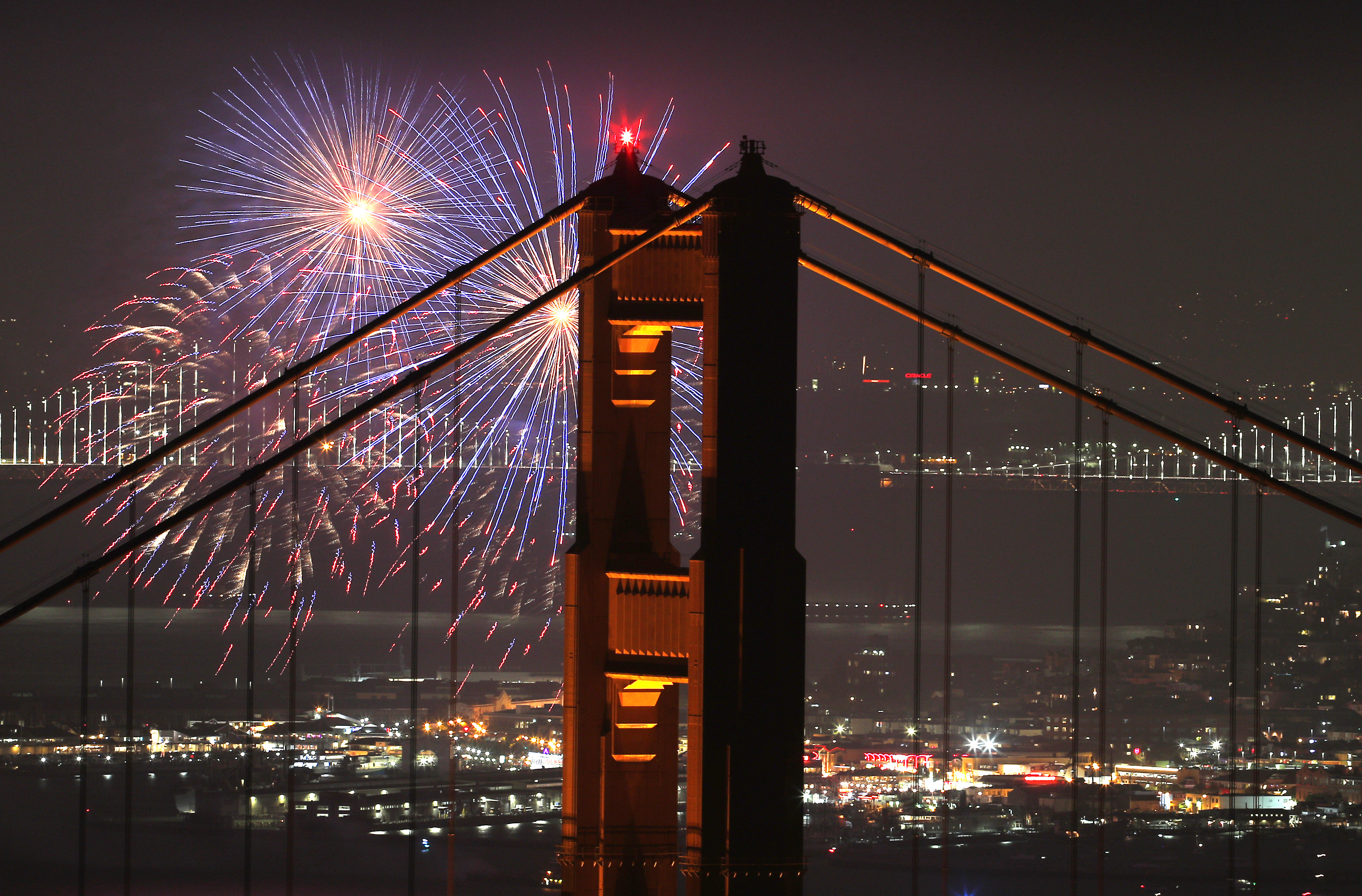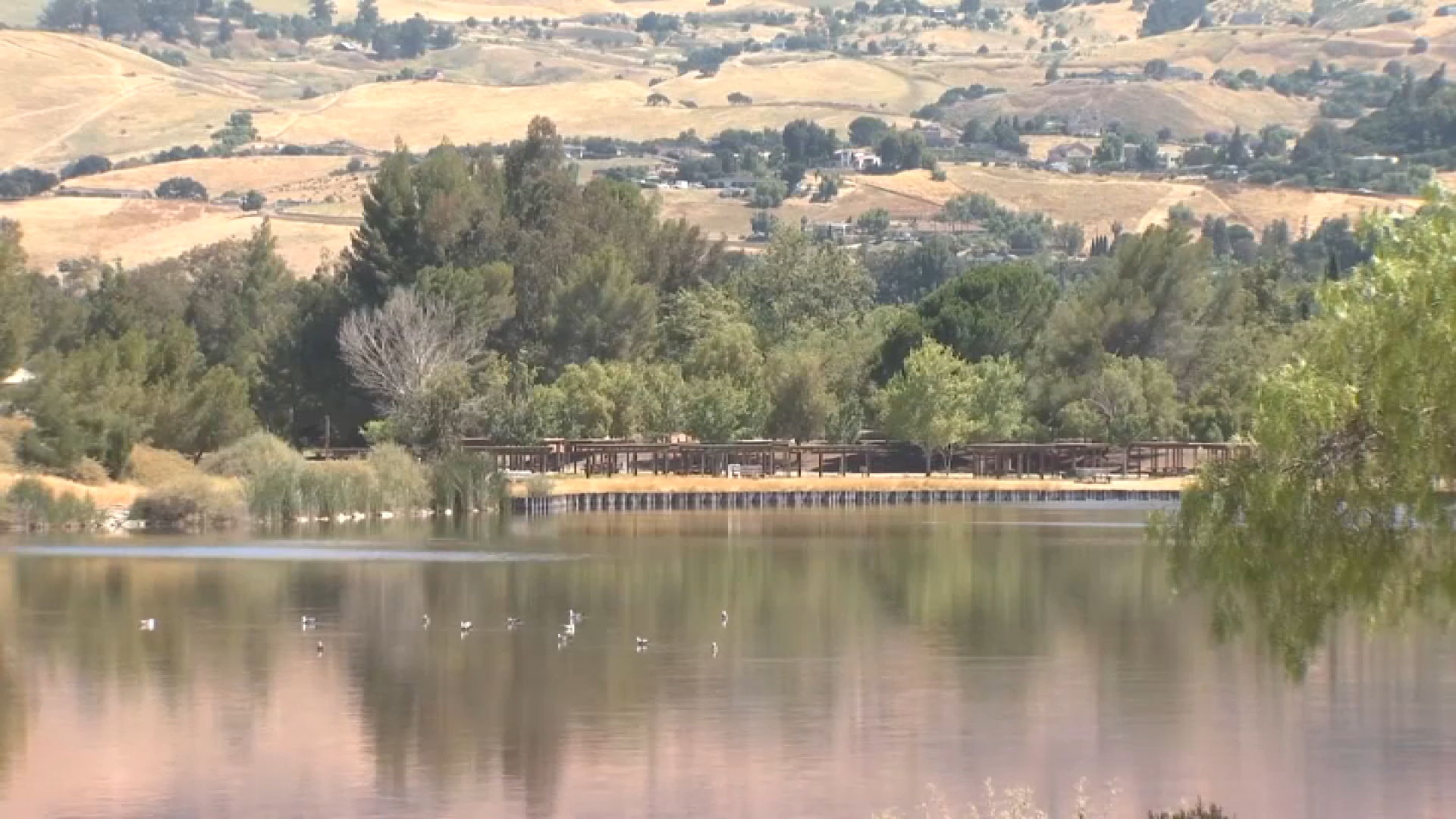The San Mateo County Sheriff’s Office held a buyback event on Saturday at the courthouse in South San Francisco.
Unofficial fireworks are illegal in many Bay Area communities, so why do they fill the skies on the Fourth of July holiday?
Every year, local fire departments issue warnings about the risk of personal injuries and the threat of forest fires due to fireworks, especially in the hills where dry grass and vegetation provides fuel for fires to spread quickly.
This Fourth of July on Thursday, new city, county and state actions have focused on local readiness, tougher penalties for those who break fireworks laws, and critical analyses of the effects and policies that surround them.
The Alameda County Sherriff and Fire departments said in a statement that just last month, a brush fire touched off by illegal fireworks came within feet of nearby homes in the Oakland Hills. That fire was caught on surveillance video, showing how quickly small fires can turn into infernos as the weather heats up.
"We'll be increasing our staffing and available fire rescues resources on July 4 to include additional fire engines, one water, tender, one bulldozer, one hand crew, and one battalion chief," Alameda deputy chief Ryan Nishimoto said. "This includes additional fire engines were safe and sane fireworks are allowed."
The official "Safe and Sane" seal is determined by the state, as every jurisdiction has its own definition, but it's basically anything that doesn't leave the ground. Examples include fountains, sparklers, smokeballs, snake-type fireworks, ground-spinning fireworks, pinwheels and some crackling items.
As of this January, Assembly Bill 1403, which was signed by the Governor last fall, doubles the fines for illegal fireworks. Under the new law, misdemeanors penalty fines range between $1,000 to $2,000, and the potential of a year in county jail. Those fines increase tenfold for people possessing large amounts of dangerous fireworks, with a potential for up to three years in a California state prison. Additionally, parents of willful violators are held liable for any damage or injuries caused by their children using illegal fireworks.
Illegal fireworks aren't just a danger to fingers or dry brush. This May, a San Francisco Civil Grand Jury released a report took a deep dive into the unknown effects of fireworks on members of the population and the natural environment. Its recommendations focused on how the city could better enforce laws and educate the public about illegal fireworks.
The report reveals several unknown consequences silently happening amid the reverie. The booming sound of firework explosions can frighten or traumatize over thousands of pets, small children, people with autism and dementia, as well as an estimated 2,500 combat veterans and 37,700 San Francisco adults suffering from PTSD.
Get a weekly recap of the latest San Francisco Bay Area housing news. Sign up for NBC Bay Area’s Housing Deconstructed newsletter.
Between 2018 and 2023, most of the dispatched calls from the San Francisco Police Dept. were in the Mission District, followed by Chinatown and the Tenderloin.
San Francisco's neighborhoods have certain cultures and religions with traditions that involve fireworks. Traditionally, Chinese people believed that fireworks could ward off evil spirits. In Mexico, saints are honored with firework displays. Fireworks are also a patriotic American tradition, that goes along with barbecuing, sporting events and the national anthem.
But eagles flying through the smoke may not feel the same patriotic spirit.
The civil grand jury found that carbon dioxide, carbon monoxide, nitrogen, sulfur dioxide, and particulate matter emitted by fireworks can harm wildlife and contribute to climate change. Modern fireworks emit lead, copper, and other toxins, which can remain in soil and water long after the party is over. In one research study, harmful levels of lead were found in 2 of the 12 types of fireworks analyzed.
Some Canadian cities have replaced fireworks with special effects pyrotechnic displays, which are quieter and have a lower altitude, to protect wildlife. Other options include drone displays like the one presented at the opening ceremony of the 2020 Tokyo Olympics, and laser spectacles which reduce the risk of wildfires and do not increase air pollution. Salt Lake City in Utah has been using lasers during the Fourth of July holiday to reduce environmental damage while still providing the same level of spectacle as fireworks.
According to the Consumer Products Safety Commission, 66% of injuries from illegal fireworks in 2023 occurred in the weeks before and after the July 4 Holiday. Nationally, 9,700 people were treated in emergency rooms for fireworks related injuries, with 8 deaths. Twenty percent of those injuries affected people's eyes, but the majority, 35% were injuries to hands and fingers.
Teenagers ages 15 to 19 years of age had the highest estimated rate of emergency department-treated, fireworks-related injuries, with children ages 5 to 9 years old having the second highest rate. The commission advises people to never allow children to play with or ignite fireworks, including sparklers. Sparklers burn at temperatures of about 2,000 degrees Fahrenheit -- hot enough to melt some metals.
Make sure fireworks are legal in your area, and only purchase and set off fireworks that are labeled for consumer use. Never use fireworks while impaired by alcohol or drugs, that's right. Always keep a bucket of water or a garden hose handy, just in case.
In San Francisco, anonymous tips for reporting sales or possession can be submitted by phoning 311 or through the San Francisco Police Department's online anonymous tip line. The San Francisco Fire Department also has an online portal.
For other Bay Area Counties, illegal fireworks can be reported through the county sheriff's department.



